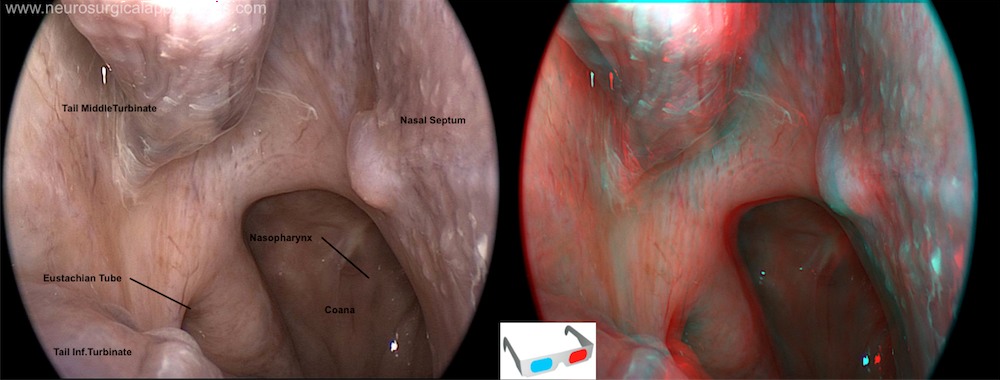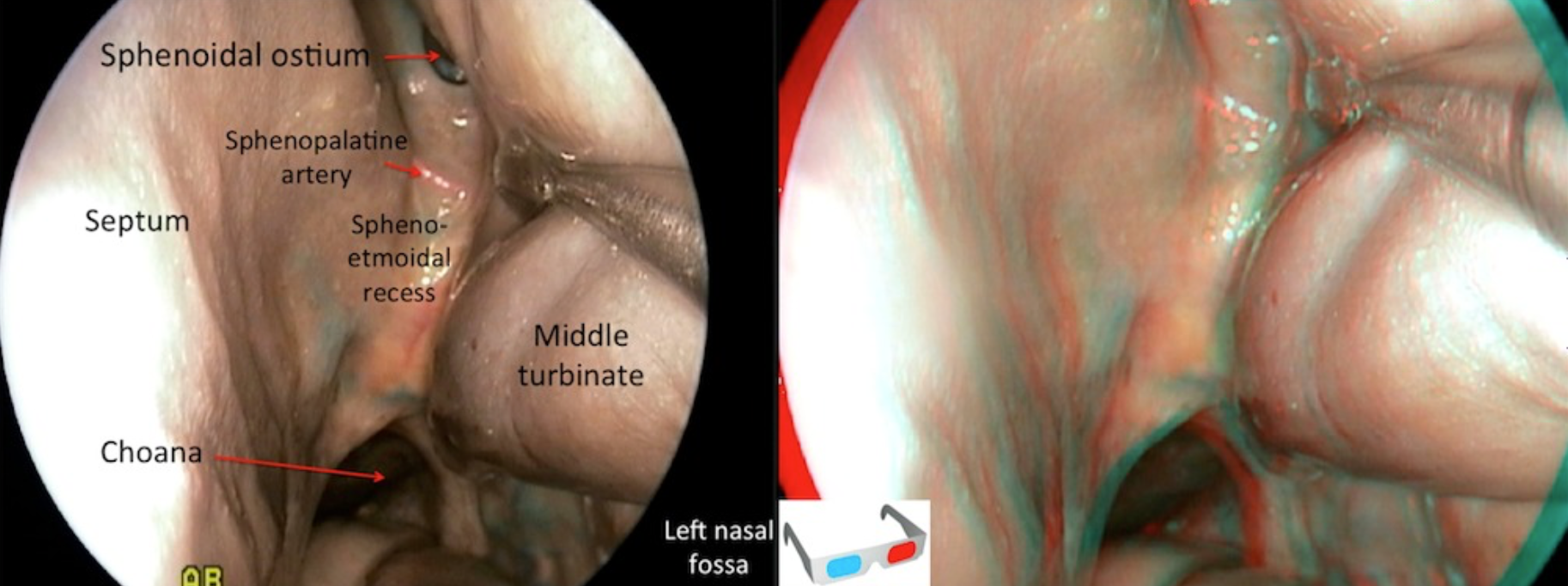Middle turbinate
Clinicians have encountered many variations of the middle turbinate. Previous descriptions of the middle turbinate were only focused on its size and shape and lacked surgical implications associated with endoscopic sinus surgery. Therefore, the aim of this study was to examine the surgical anatomy of the middle turbinate in hemisected cadaveric heads. The middle turbinates from 101 hemisections of adult Korean cadaveric heads were measured using digital calipers and a protractor. The middle turbinates were then classified according to their shape. The mean distance between the anterior attachment of the middle turbinate and the anterior attachment of the superior turbinate was 18.5 mm. The posterior end of the middle turbinate extended more posteriorly than that of the inferior turbinate in 40% of the cases, while in 26.3% of the cases, the posterior end of the inferior turbinate extended more posteriorly than that of the middle turbinate. The middle turbinate was classified into three types according to the shape of its anterior border. In type 1, the anterior border of the middle turbinate ran directly posteroinferiorly from its attachment to the conchal plate, and was observed in 45.3% of the cases. In type 2, the anterior border of the middle turbinate initially coursed inferiorly from the conchal plate and then turned in a posteroinferior direction. This type was observed in 44.2% of the cases. Type 3 involved 10.5% of the cases where the anterior border bulged anteriorly before it coursed posteroinferiorly. The information provided in this report should assist surgeons when performing partial middle turbinectomies 1).
The use of endoscopes in transnasal surgery offers increased visualization. To minimize rhinological morbidity without restriction in manipulation, Reisch et al., introduced the mononostril transethmoidal paraseptal approach.
The aim of the transethmoidal-paraseptal approach is to create sufficient space within the nasal cavity, without removal of nasal turbinates and septum. Therefore, as a first step, a partial ethmoidectomy is performed. The middle and superior turbinates are then lateralized into the ethmoidal space, allowing a wide sphenoidotomy with exposure of the central skull base.
This minimally invasive transethmoidal-paraseptal approach is a feasible alternative to traumatic transnasal concepts with middle turbinate and extended septal resection 2).

